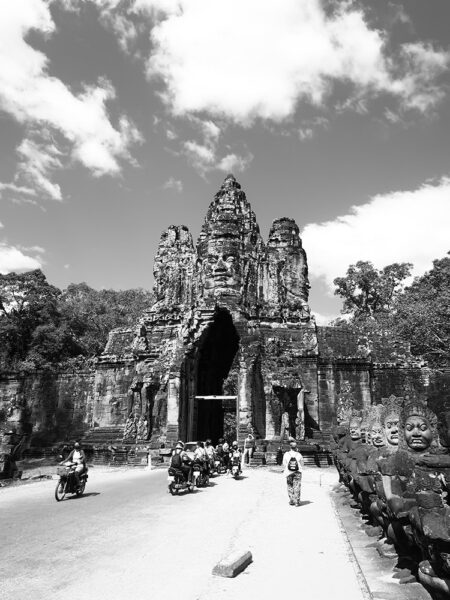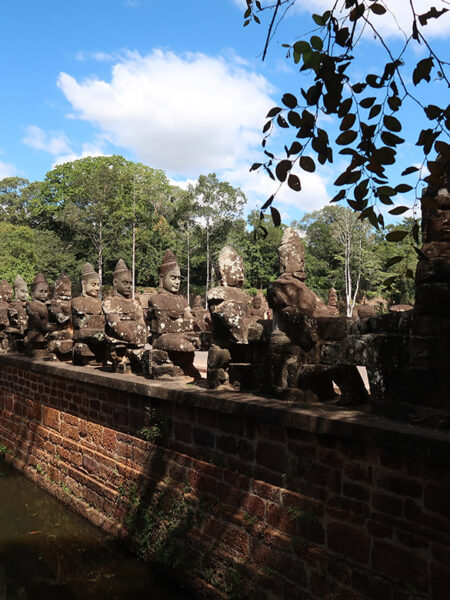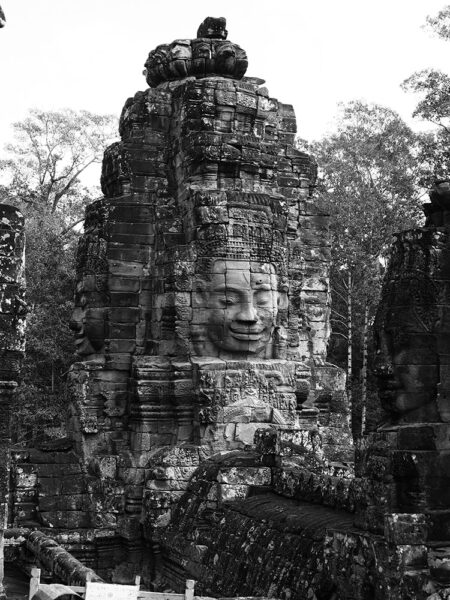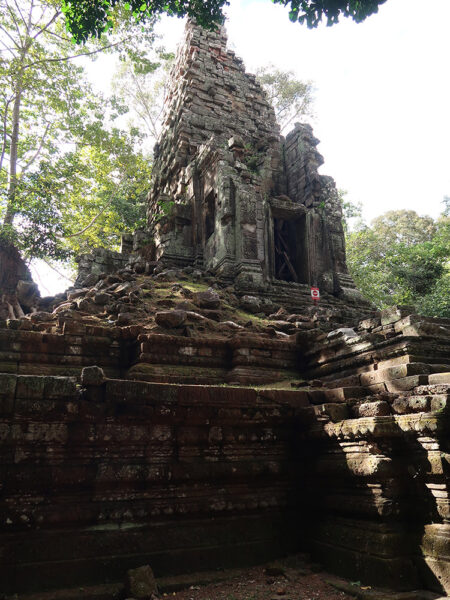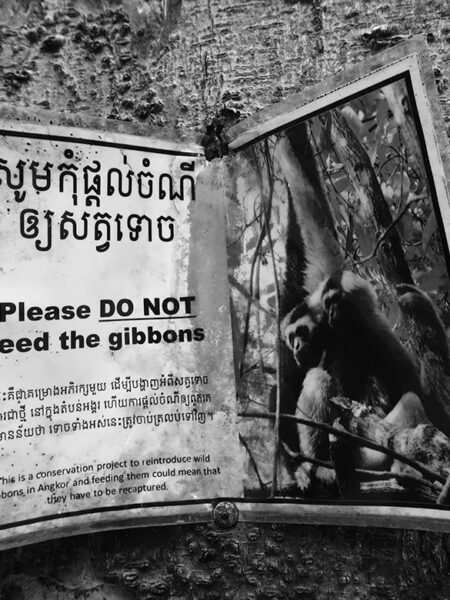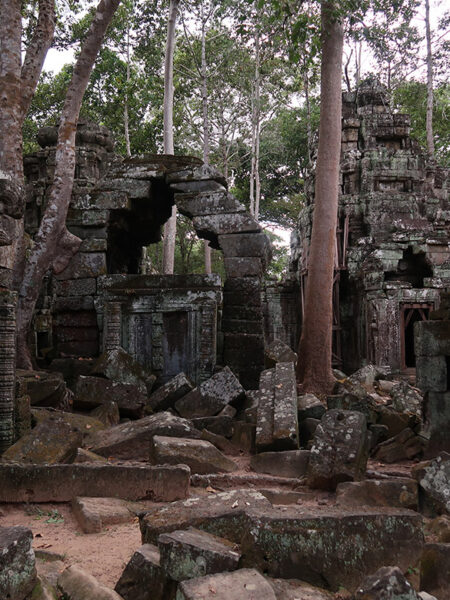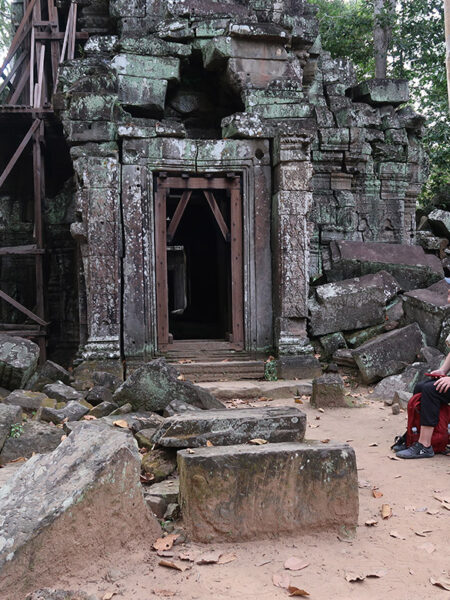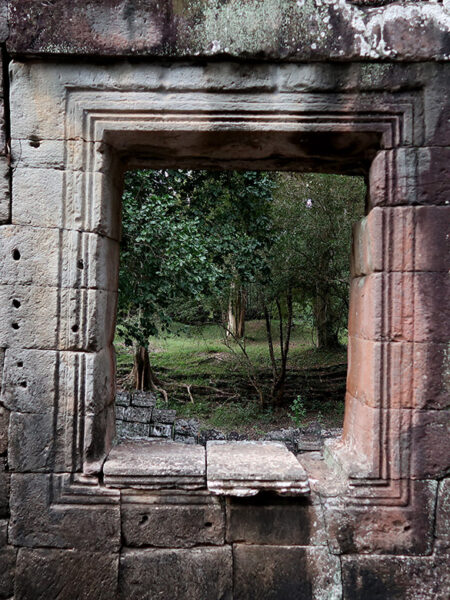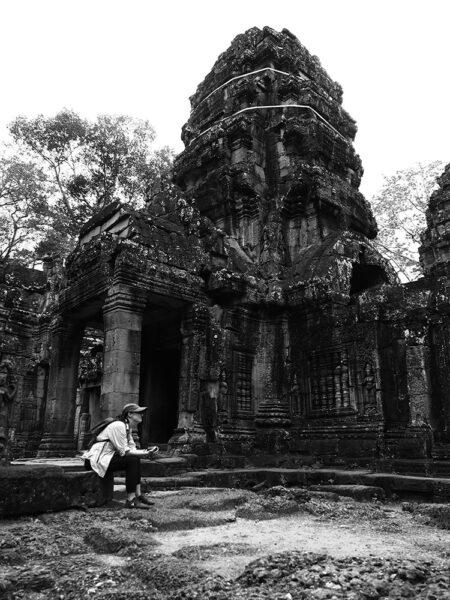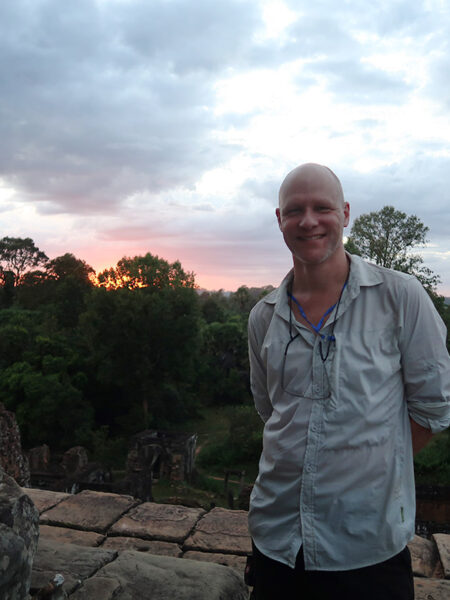I’m writing now in a shack somewhere outside of Battambang, three hours from Siem Reap. We’re staying a night at a homestay and—hold on, I’ve just shifted location to the homestay and I’m now at a little table on a veranda there, 12 km southwest of Battambang.
Anyway, on this day (the 27th) we slept in, had a hotel breakfast, and set off again at midday. We first stopped at Angkor Thom’s south gate, which we’ve driven through several times and not had the opportunity to stop and look at closely. The bridge across the moat is lined with giant statues enacting the ‘Churning of the Ocean of Milk’ tug-of-war story – gods on one side all pulling on the body of a snake naga, demons on the other doing the same. It’s a theme that crops up everywhere at Angkor and is particular suited to monolith railings. The tall stone gate through which an endless stream of traffic flows is topped with a slightly smiling monumental face.
Our first stop was the temple of faces: Bayon, and this time it was the hottest part of the day and the crowds were far thinner, so the upper level was far less crowded.
Next, we stopped the car near the Terrace of the Elephants—an outdoor art show was being set up for the evening, using the ancient terrace as a stage—and walked over it to the crumbling Phimeanakas temple, a pyramid quietly mouldering away into the swampy ground around it. From there we walked through the jungle, past an ancient, huge rectangular terraced pool, and to a small temple called Preah Palilay, its stones falling apart and giant trees growing from the rubble.
It was extremely hot and muggy and sweat poured from us. We walked over to the Terrace of the Leper King, which is covered with excellent wall carvings, and back across a wide central grassy space to the car.
Our next temple stop was Ta Nei, beyond Angkor Thom’s walls to the east. A dirt road led into the jungle, and for the first time we had a temple entirely to ourselves. Jumbles of stone blocks lay everywhere, and some incredibly loud bug or bugs made an ear-piercing siren wail as we clambered on and around the atmospheric, creepy ruin.
As we drove back along the dirt road, a line of tuk tuks passed us—we were very lucky to experience the place alone.
Next, Ta Keo, a pyramidal temple that was never finished and remains undecorated. Apparently it was hit by lightning and this was interpreted as a bad omen, causing construction to cease. The view was fantastic from the top of the steeply staired, crowning structure.
Finally, our last ‘new’ temple, Banteay Srei. A lovely complex, not too busy, at the end of a long, wide jungle path lined with tourist stalls. The hassling was very minor however and almost everyone responds well to a friendly ‘no thankyou’.
It was about 5pm and sunset was approaching, so Chheab dropped us back at Pre Rup, one of the few places open late. It was quite busy at the summit of the monumental pyramid, but not unbearably so, and there were no tour groups thankfully, so Carol’s fears that we’d get accidentally nudged off the top to fall screaming to our early deaths proved baseless! I certainly don’t mind sharing space with other travellers, but mindless jabbering mobs of idiots who hardly know or care where they are drive me insane.
We sat near the edge on a corner of the top level and watched the sun’s red glow fade behind the jungle (and the people constantly taking pictures of each other). A breeze blew up and finally cooled the evening. It’s not every day you watch the sun go down from the top of a 10th century temple pyramid.
Back to our hotel. We made a plan with Chheab to met him at a supermarket complex in the early morning after checkout so he can drive us to Battambang as an independent contractor. Then, after showers, we got a tuk tuk to a restaurant called Chandry Tree on the riverside (apparently the best restaurant in town). This was extremely posh—as we walked in, a hostess pointed out each step to me, apparently thinking I was in constant danger of tripping over my own feet as she showed us to the outside terrace table. The food and service were excellent, and it was still only about 40 bucks NZ (which again makes me fume, as often do, about the mediocrity and high prices of food in New Zealand). We left the charming waiter a big tip; like many young Cambodians we have met (and for that matter, Vietnamese on our last trip), he works extremely hard to learn English and get a higher education. It sometimes makes me feel very lazy when I encounter these motivated young people, determined to create a better future for themselves and their families and often with a command of several languages; I certainly admire them.


